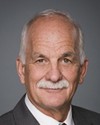Mr. Speaker, I would like to take up where I left off yesterday.
Like Bill C-38, Bill C-45 is another massive omnibus bill that makes changes to many laws. Once again, the Conservatives are trying to ram their legislative measures through Parliament without allowing Canadians or their representatives, the MPs, to carefully examine them. The 400 pages of this bill contain many areas of concern. I would like to focus on a few specific points since, if I wanted to get into any detail, I would barely have time to address the table of contents of this mammoth bill in the 10 minutes that I have to speak.
The first point that I would like to speak about is health, particularly the decision to eliminate the Hazardous Materials Information Review Commission, which falls under division 13 of part 4 of the bill. The commission was an organization that helped to regulate hazardous materials protected by business confidentiality by ensuring that employers and workers had the information they needed to safely handle hazardous materials in the workplace.
I would like to know what prompted this change at this time. Was the organization, in its existing form, not doing its job properly? I doubt it. Why is it necessary to give the mandate that is currently being carried out by the commission to a group of people who will be appointed by the minister? These are the questions that we should be examining. The government did not provide much in the way of justification for this change. It keeps hiding significant changes in giant, complex bills to prevent MPs from discussing and thoroughly examining the impact of these changes.
Unfortunately for the government, it has clearly not yet learned its lesson. The official opposition will not let the government impose new omnibus bills without resistance. Canadians deserve better. We will do our job and we will expose the bad decisions that this Conservative government is making.
The other point that I would like to address is the impact of the cuts to research and development. My riding, Saint-Bruno—Saint-Hubert, is lucky enough to have in it a number of specialized aerospace companies through the Saint-Hubert airport. The North American head office of Bombardier Transportation is also in my riding, in Saint-Bruno.
The changes to research and development proposed by the Conservative government will affect all these businesses and their workers. Various measures in the bill eliminate $500 million for entrepreneurs at a time when Canada already lags behind in investment in research and development. In my riding many people depend on the aerospace industry, and this situation is creating instability at a bad time.
Canada's aerospace industry is ranked fifth in the world. It employs over 150,000 Canadians directly and indirectly. It generates $22 billion in revenue annually and invests approximately $2 billion in research and development. That is significant.
These cuts are being made at a most unfortunate time because the sector is growing internationally and competition is increasingly fierce. In this context, I cannot understand and I deplore the decision made by the government to slash funding for an important tool that can spur innovation and productivity and maintain existing jobs. Technology and innovation have given Canada a comparative advantage in these leading-edge industries. Strategic investments in research and development as a whole are vital in order for Canada's industrial sector to compete with emerging countries and for Canada to retain its competitive edge internationally and its well-paid jobs.
I am not making this up. In its pre-budget consultation brief, the Aerospace Industries Association of Canada said that these measures to boost research and development are important for the future. The association said the following in the brief it submitted to the Standing Committee on Finance:
These measures will foster competitiveness and productivity, ensuring our industry is positioned to take advantage of the outstanding growth in demand for aircraft and thus create long-term, high-quality jobs for Canadians.
The NDP has called for a better balance between tax credits and direct support to businesses, which is what countries such as Israel, Sweden and Finland do, and they are ranked the most innovative countries according to OECD. But the budget only decreases the government's support for research and innovation.
And the Conservatives are proclaiming loud and clear that the 2012 budget creates jobs. We know that that is not true. In fact, the Parliamentary Budget Officer believes that the budget will lead to the loss of 43,000 Canadian jobs. This budget would increase the unemployment rate. I have to say that they are not walking the talk.
This bill is proof that the government says one thing but does another. It claims to want to support job creation, but there are no concrete measures to strengthen existing jobs, let alone create new ones. The Conservatives got elected in 2006 by promising Canadians that they would be transparent and accountable. But the government is hiding major reforms from Canadians by putting them into omnibus bills like this one and the earlier Bill C-38, and it does not want to give the Parliamentary Budget Officer the figures related to cuts to federal departments and agencies.
The NDP will always stand up proudly for transparency and accountability.












